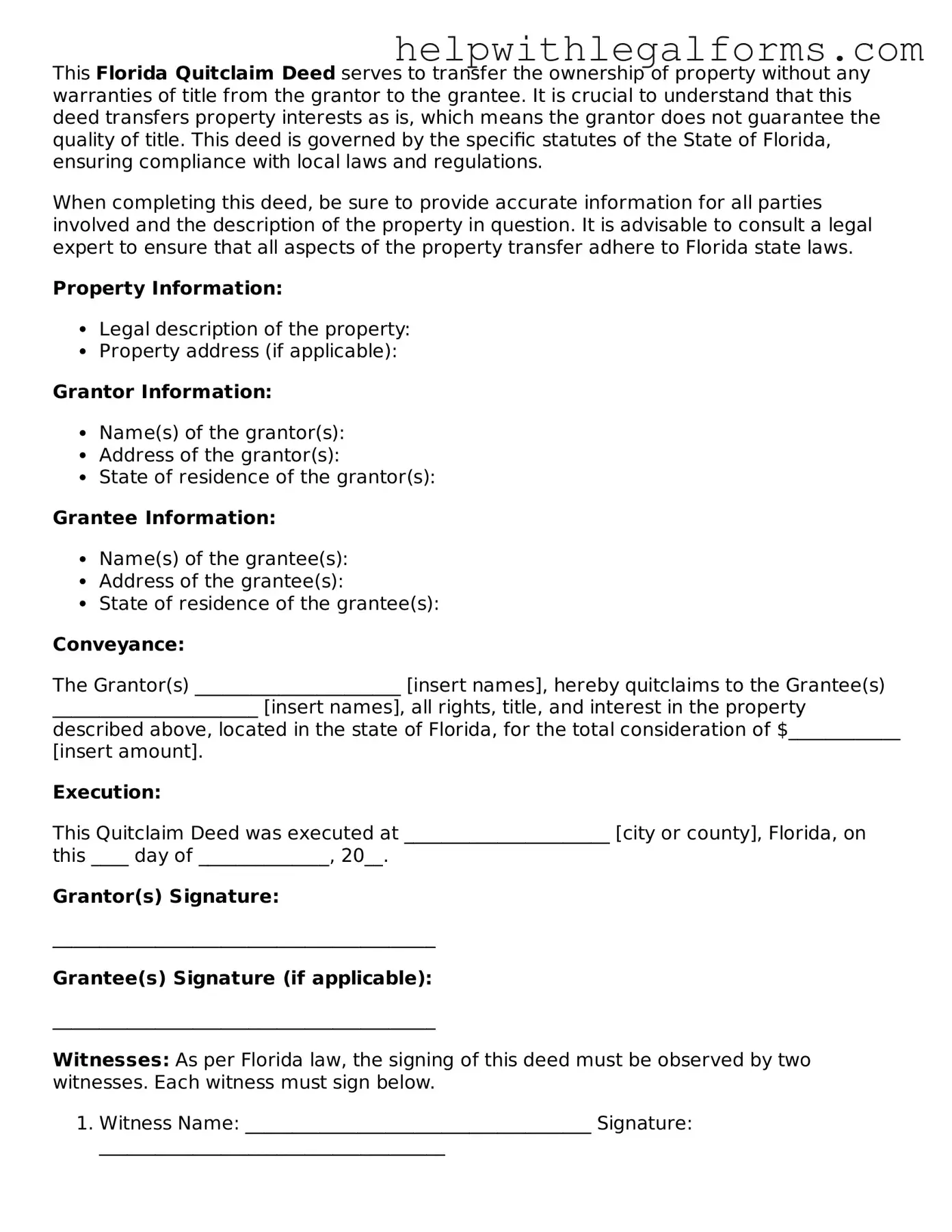This Florida Quitclaim Deed serves to transfer the ownership of property without any warranties of title from the grantor to the grantee. It is crucial to understand that this deed transfers property interests as is, which means the grantor does not guarantee the quality of title. This deed is governed by the specific statutes of the State of Florida, ensuring compliance with local laws and regulations.
When completing this deed, be sure to provide accurate information for all parties involved and the description of the property in question. It is advisable to consult a legal expert to ensure that all aspects of the property transfer adhere to Florida state laws.
Property Information:
- Legal description of the property:
- Property address (if applicable):
Grantor Information:
- Name(s) of the grantor(s):
- Address of the grantor(s):
- State of residence of the grantor(s):
Grantee Information:
- Name(s) of the grantee(s):
- Address of the grantee(s):
- State of residence of the grantee(s):
Conveyance:
The Grantor(s) ______________________ [insert names], hereby quitclaims to the Grantee(s) ______________________ [insert names], all rights, title, and interest in the property described above, located in the state of Florida, for the total consideration of $____________ [insert amount].
Execution:
This Quitclaim Deed was executed at ______________________ [city or county], Florida, on this ____ day of ______________, 20__.
Grantor(s) Signature:
_________________________________________
Grantee(s) Signature (if applicable):
_________________________________________
Witnesses: As per Florida law, the signing of this deed must be observed by two witnesses. Each witness must sign below.
- Witness Name: _____________________________________ Signature: _____________________________________
- Witness Name: _____________________________________ Signature: _____________________________________
Acknowledgment by Notary Public:
State of Florida
County of ______________________
On this ____ day of ________________, 20__, before me, ______________________ [insert name of notary], personally appeared ______________________ [insert names of grantor(s)], to me known to be the person(s) described in and who executed the foregoing instrument, and acknowledged that he/she/they executed the same as his/her/their voluntary act and deed.
Notary Public: ______________________
Seal:
